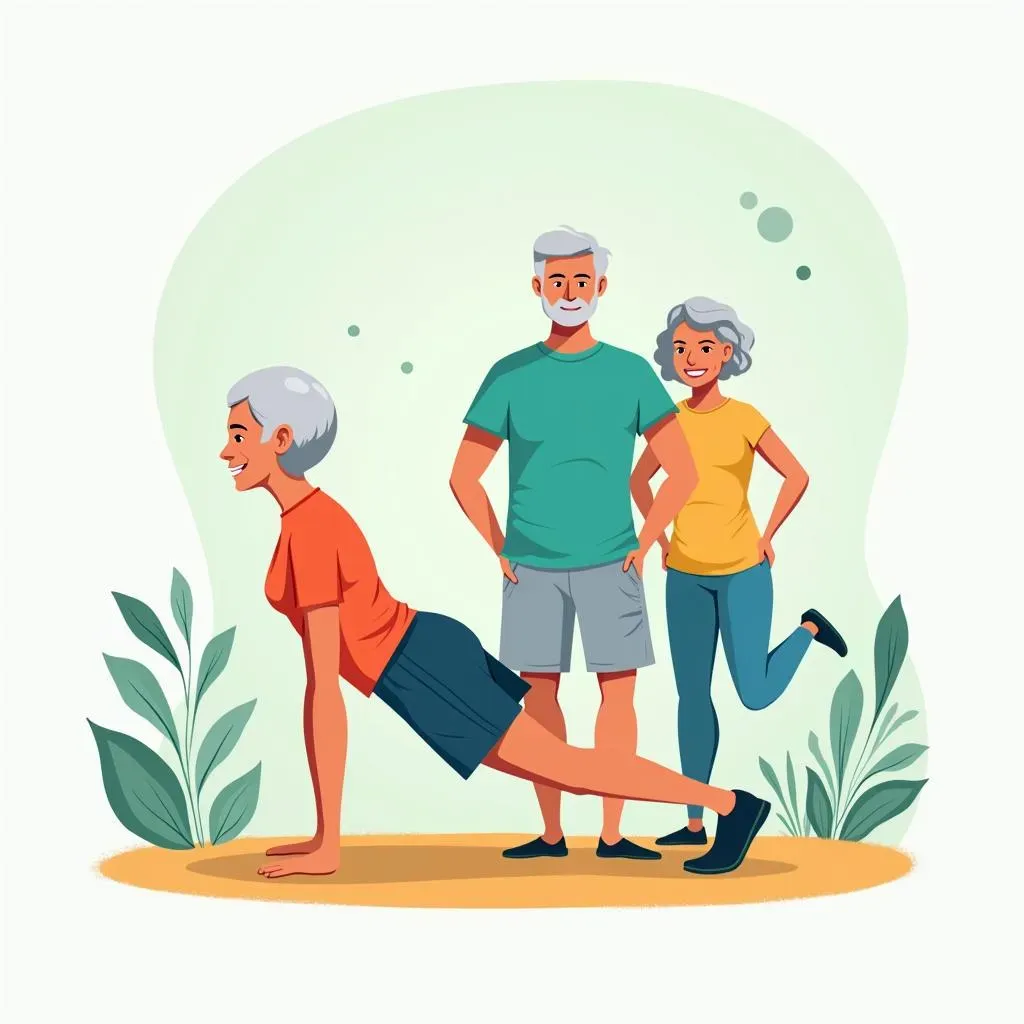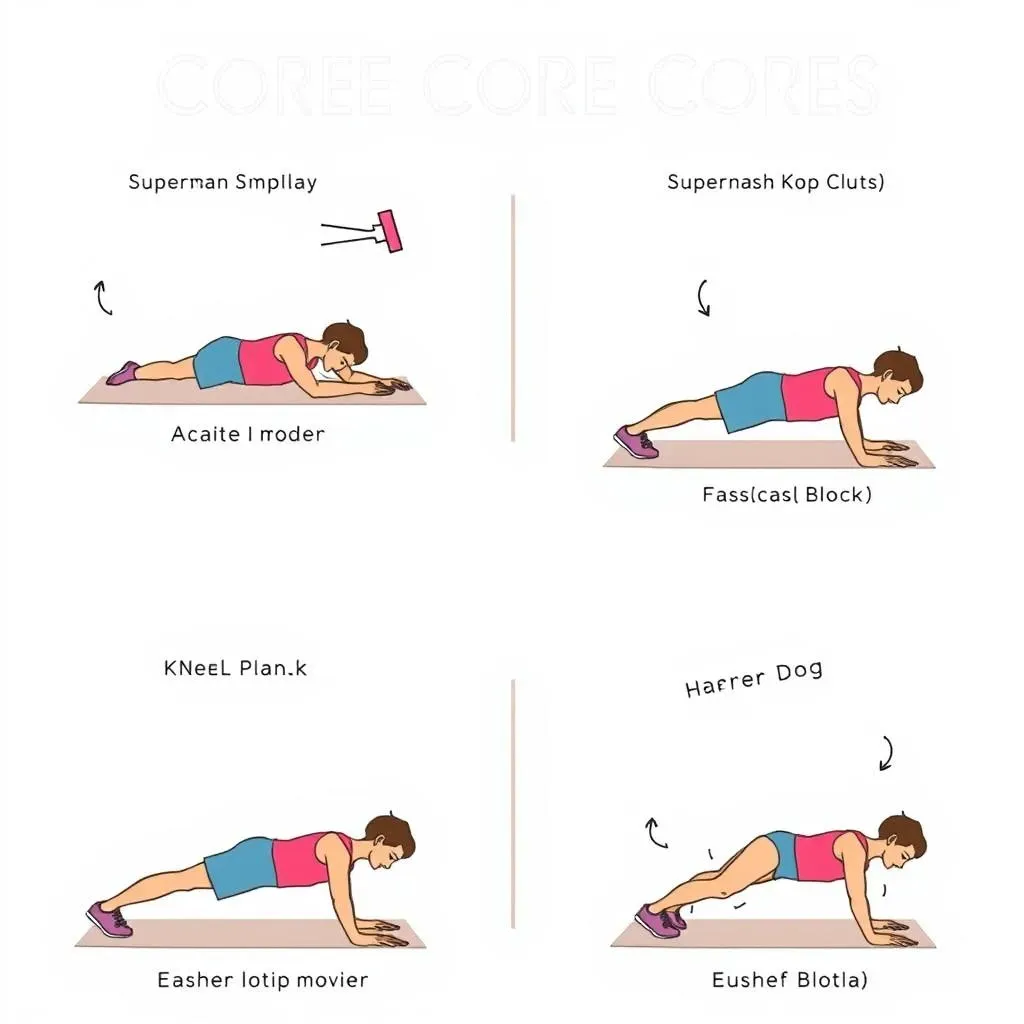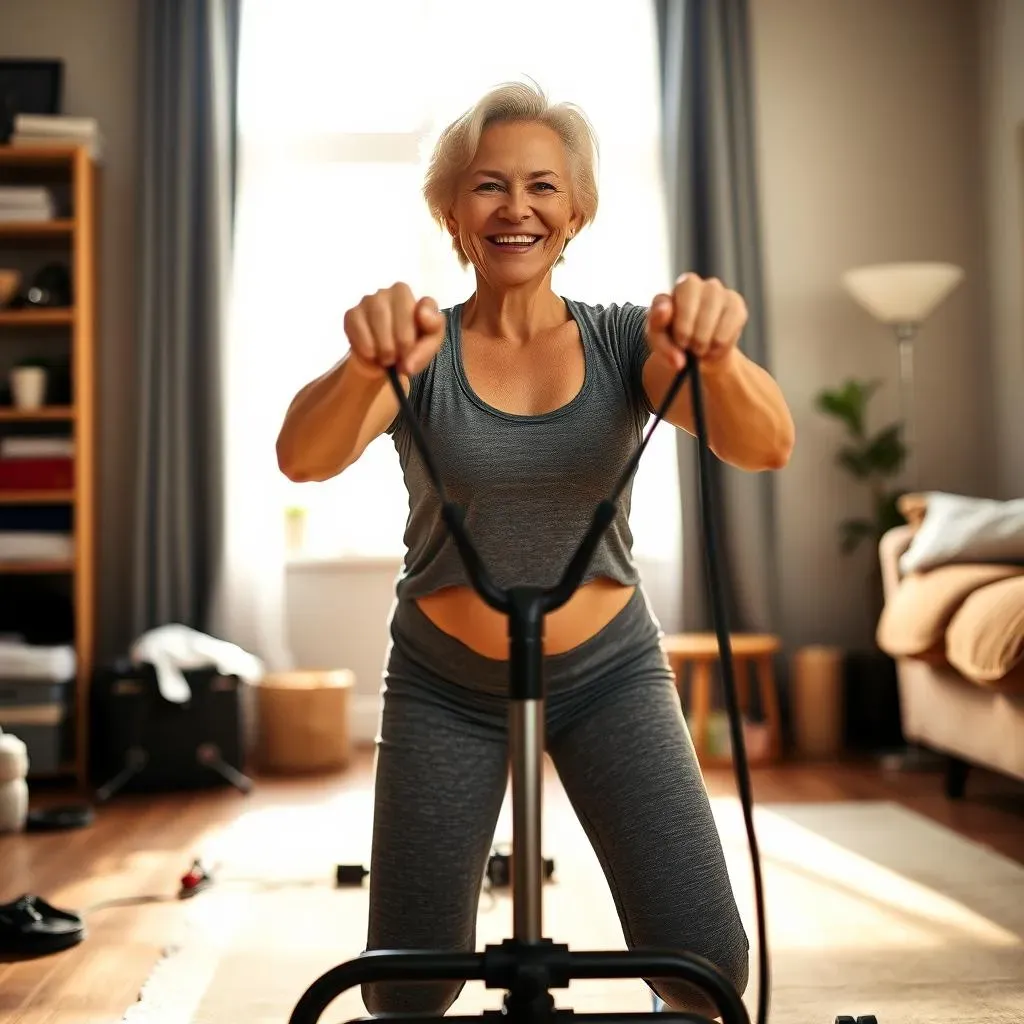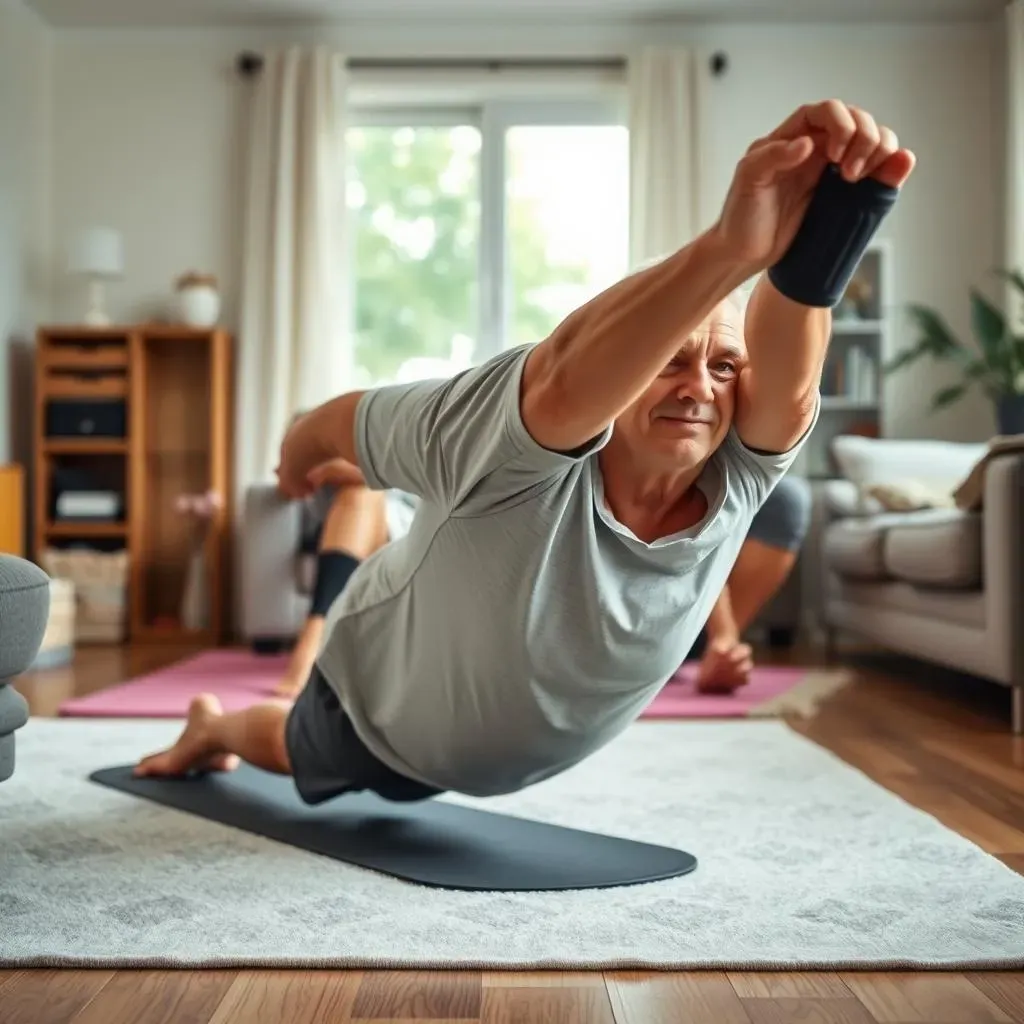Table of Contents
Are you over 50 and feeling like your core isn't what it used to be? Maybe your back aches, or you're not as steady as you once were. It's not just about having a six-pack; a strong core is the secret weapon for a healthy, active life, especially as we get older. Weak core muscles can lead to all sorts of problems, from back pain to falls, making everyday tasks a struggle. But don't worry, you don't need a fancy gym or hours of training to get your core back in shape. This article is all about "core workouts at home for over 50", and I'm going to show you a simple, effective 20-minute routine designed by a physical therapist that you can do right in your living room. We will be looking at why a strong core is so important, and I will walk you through the exercises, step by step. I'll even give you some modifications to make them easier or harder. So, let's get started on building a stronger, healthier you, right at home!
Importance of Core Strength for Over 50

Importance of Core Strength for Over 50
Why Your Core Matters More Than You Think
Okay, so you might be thinking, "Core strength? Isn't that just for people who want washboard abs?" Nope! It's way more than that, especially as we get a bit older. Your core is like the central support system for your whole body. It's not just your abs, it's also the muscles in your back, hips, and pelvis. These muscles work together to keep you upright, stable, and moving smoothly. When they're weak, everything else suffers. Think of it like a tree: if the trunk is weak, the whole tree is unstable and prone to falling over. That's what happens to our bodies if we neglect our core.
I remember when I first started to pay attention to my core. I wasn't trying to get ripped or anything. I was just tired of my back hurting after a day of gardening. I thought, "There's gotta be a better way!" That's when I started learning about the importance of core strength. It wasn't about vanity; it was about feeling good and being able to do the things I enjoy without pain.
The Domino Effect of a Weak Core
Now, let's talk specifics. What happens when your core is weak? Well, for starters, back pain is a big one. Those core muscles are crucial for supporting your spine. If they're not doing their job, your back has to pick up the slack, leading to aches and pains. But it doesn't stop there. A weak core can also throw off your balance, making you more likely to stumble and fall. And we all know falls become more dangerous as we age. It can also mess with your posture, making you look slumped over and less confident. And let's face it, nobody wants that. You might also find everyday tasks like carrying groceries or getting out of a chair become more challenging.
Problem | Cause | Solution |
|---|---|---|
Back Pain | Weak core muscles | Strengthen core muscles |
Poor Balance | Unstable core | Core exercises for balance |
Bad Posture | Lack of core support | Core strengthening exercises |
Difficulty with Everyday Tasks | Weak core unable to support movement | Targeted core workout |
Building a Strong Foundation for a Better Life
The good news is, it's never too late to build a stronger core. By focusing on targeted exercises, you can reverse the negative effects of a weak core. Think of it like building a house. You wouldn't build on a shaky foundation, would you? The same goes for your body. A strong core is the foundation for everything else. When your core is strong, your back feels better, your balance improves, and you can move more easily. It's like unlocking a whole new level of physical freedom. You can get back to doing the things you love, whether it's gardening, hiking, or just playing with your grandkids. And that's what it's all about, isn't it? Living your life to the fullest.
"The core is the powerhouse of the body. A strong core is the key to a healthy, active life." - Dr. Rami Hashish, PhD, DPT
The 20Minute Core Workout at Home

The 20Minute Core Workout at Home
The Power of a Quick Routine
Alright, so now we know why a strong core is so crucial, right? But let's be honest, who has hours to spend at the gym? Not me, and probably not you either. That's why I love this 20-minute core workout. It's quick, it's effective, and you can do it right in your living room. No fancy equipment needed, just your own body weight and a little bit of space. This routine, designed by Dr. Rami Hashish, is a circuit, meaning you'll go through each exercise one after the other, then repeat the whole thing. It's designed to hit all the major core muscles, helping you build strength, improve stability, and ease back pain, all in just 20 minutes. I know it sounds almost too good to be true, but trust me, it works! I've been doing it for a while now, and I've noticed a huge difference in my back and overall feeling of strength.
The whole idea behind this workout is to be efficient. We're not messing around with endless reps of the same thing. Each exercise is chosen for its ability to target specific areas of your core. The focus is on quality of movement over quantity, so really pay attention to how you're moving. It's like a well-oiled machine, each part working together to create a powerful result.
The Five Key Exercises
So, what are these magical exercises? Well, here they are: Superman, Glute Bridge, Knee Plank, Heel Touch, and Bird Dog. Don't worry if those names sound a bit intimidating, I'm going to break each one down for you, so it is easy as pie. Each exercise has its own set of reps and a recommended number of sets. The idea is to do the full circuit twice, with a one-minute rest between each circuit. You should aim to do this routine three times a week. That's it! No crazy schedules, no gym fees, just 20 minutes of focused work, three times a week. These exercises are designed to engage your core from different angles, making sure you hit all the important muscles. It’s like a full-body workout, but focused on the core.
These aren't just random moves, these are specific exercises that will engage your core to help you build a better you. I've found that when you understand why you're doing something, it makes it easier to stick with it. So, let's get into the specifics of each exercise and how they'll help you.
Exercise | Reps | Sets |
|---|---|---|
Superman | 10-12 | 2 |
Glute Bridge | 12-15 | 2 |
Knee Plank | 30 seconds | 2 |
Heel Touch | 10-12 each side | 2 |
Bird Dog | 10-12 each side | 2 |
Modifications for Core Exercises at Home

Modifications for Core Exercises at Home
Making It Work for You
Okay, so you've got the basic exercises down, but what if they feel too hard or too easy? That's where modifications come in. It's super important to listen to your body and adjust the exercises to fit your current fitness level. The goal isn't to push yourself to the point of pain, it's to challenge yourself in a way that feels right for you. Think of these modifications like training wheels on a bike, they help you get the hang of things before you take them off. And hey, maybe you'll need them for a while, and that's totally fine. I know when I first started, I needed every modification possible, and that's perfectly okay, we all start somewhere.
The beauty of working out at home is that you can make these adjustments without feeling self-conscious. No one is watching you, so you can focus on getting the movement right without worrying about what anyone else thinks. Modifications aren't about making things easier, they're about making them more accessible and effective for your specific needs. It is about working smart, not just hard.
Easy Tweaks for Each Move
Let's look at some specific modifications for each of the five core exercises. For the Superman, if it feels too much to lift both your arms and legs at the same time, try lifting just one arm and the opposite leg. Or, you can start by just lifting your arms or just your legs, and gradually work your way up. With the Glute Bridge, if you find it hard to lift your hips high, try doing them with your back on the floor, or you can reduce the range of motion. For the Knee Plank, you can do it on your forearms instead of your hands, or you can shorten the hold time. If the Heel Touch is tough, try reducing the distance you're reaching, or just do crunches instead. And if the Bird Dog is a challenge, start by just extending one arm or one leg at a time. The key is to make small, incremental changes, and to progress as you get stronger.
Remember, these modifications aren't a sign of weakness; they're a sign of intelligence. You're being smart about your body and making the workout work for you. It’s like tailoring a suit, you want it to fit you perfectly.
Exercise | Easier Modification | Harder Modification |
|---|---|---|
Superman | Lift one arm and opposite leg | Hold for longer periods |
Glute Bridge | Reduce the range of motion | Single-leg Glute Bridge |
Knee Plank | Do it on forearms | Hold for longer periods |
Heel Touch | Reduce the distance you reach | Use weights |
Bird Dog | Extend one arm or one leg at a time | Hold for longer periods |
Progressing at Your Own Pace
As you get stronger, you might find that the easier modifications are no longer challenging enough. That’s awesome! That means it's time to kick it up a notch. You can start by gradually increasing the number of reps or sets, or you can try the harder modifications. For instance, if you're doing the Superman with just one arm and one leg, try doing both arms and both legs. If you're doing a regular Glute Bridge, try a single-leg Glute Bridge. If you're holding a Knee Plank for 30 seconds, try holding it for 45 seconds. The key is to listen to your body and gradually increase the challenge as you get stronger. It’s like leveling up in a game, you want to keep progressing.
The best thing about calisthenics is that you can always find ways to make it harder, or easier. There's no limit to how much you can grow and improve. Remember, this is your journey, and you should move at your own pace. The goal is to stay consistent and make progress over time. It’s a marathon, not a sprint, and you’re in it for the long haul.
"The only bad workout is the one that didn't happen." - Unknown
Why Core Workouts at Home Matter for Over 50

Why Core Workouts at Home Matter for Over 50
The Convenience Factor
Okay, let’s be real, getting to the gym can be a hassle, especially when you're over 50. Between work, family, and everything else, it can feel like there are not enough hours in the day. That's where the beauty of core workouts at home comes in. You don't need to pack a gym bag, drive across town, or deal with crowded workout spaces. You can literally roll out of bed, do your 20-minute routine, and get on with your day. It's all about making fitness fit into your life, instead of the other way around. I mean, who doesn't love the idea of working out in their pajamas? I certainly do, and sometimes I even do it with a cup of coffee in hand! It’s about making it easy and enjoyable so you’ll stick with it.
And let's not forget about the weather. I live in a place where the weather can be unpredictable, so being able to workout at home means I never have to skip a session because of rain or snow. You know, it's about removing those barriers and excuses that can make it hard to stay consistent. When your workout is as simple as walking into your living room, there's really nothing stopping you. It just makes sense, doesn't it? It's convenient, it’s comfortable, and it's effective.
Long-Term Health and Independence
Beyond the convenience, core workouts at home have a massive impact on your long-term health and independence. As we age, maintaining our strength and mobility becomes super important. A strong core isn't just about having a flat stomach; it's about being able to do the things you love without relying on others. I want to be able to travel, hike, and play with my grandkids without worrying about back pain or falling over. That's what motivates me to do my core workouts at home, three times a week. It's about investing in my future self, making sure I can stay active and independent for as long as possible. When you strengthen your core, you're not just working on your muscles, you're working on your quality of life.
Think about it, a strong core can improve your balance, reduce your risk of falls, and make everyday tasks like getting out of a chair or carrying groceries so much easier. It’s about preserving your ability to live your life to the fullest. And the best part is, you don't need fancy equipment or expensive gym memberships to achieve this. You can do it all at home, with your own body weight, and in just 20 minutes. It's a small investment of time that can pay huge dividends in your health and well-being. It's really about taking control of your health and making a proactive choice to live your best life.
Benefit | Why It Matters |
|---|---|
Convenience | Fits easily into busy schedules |
No Gym Needed | Saves time and money |
Improved Balance | Reduces risk of falls |
Increased Independence | Allows you to stay active longer |
Long-Term Health | Supports overall well-being |
